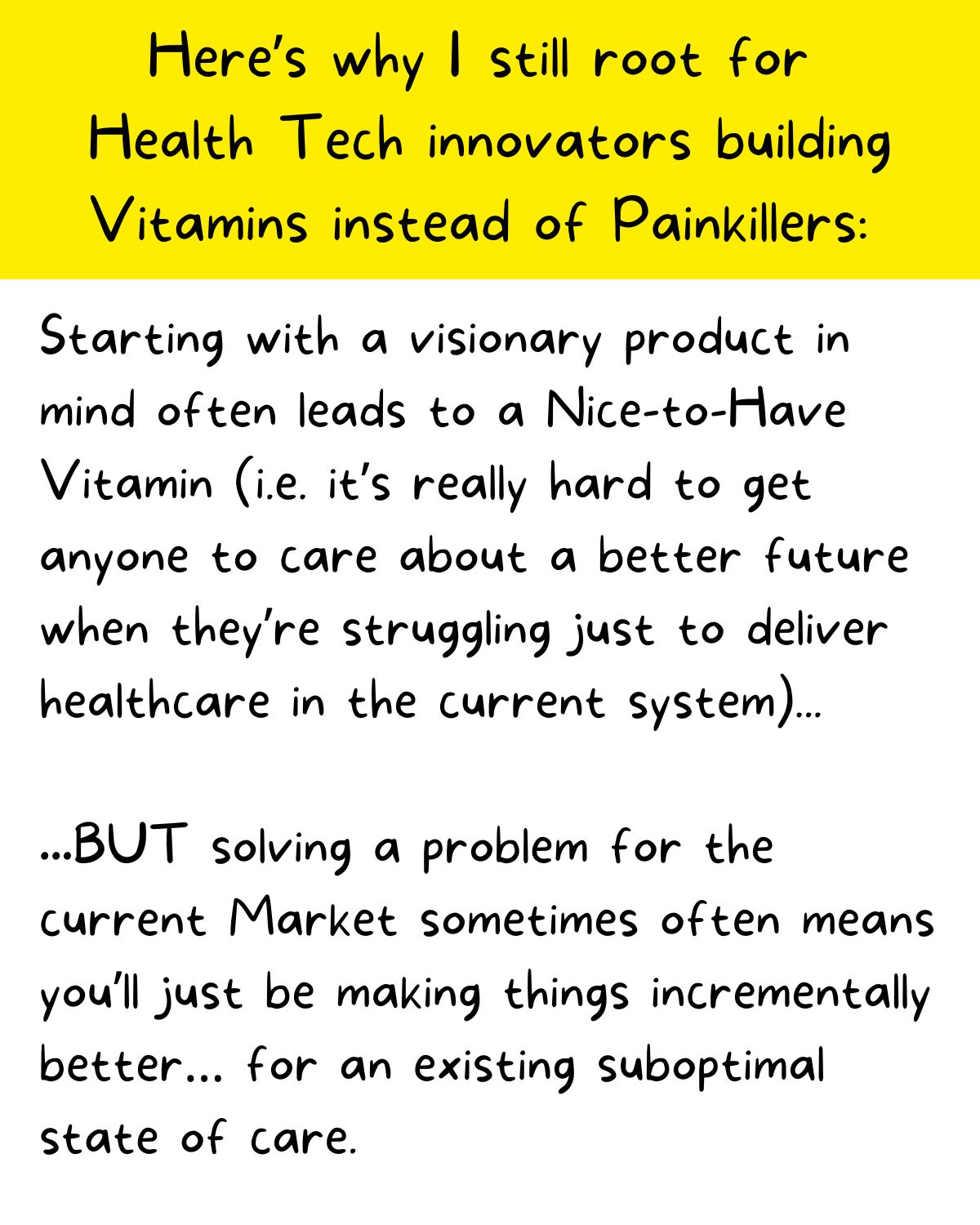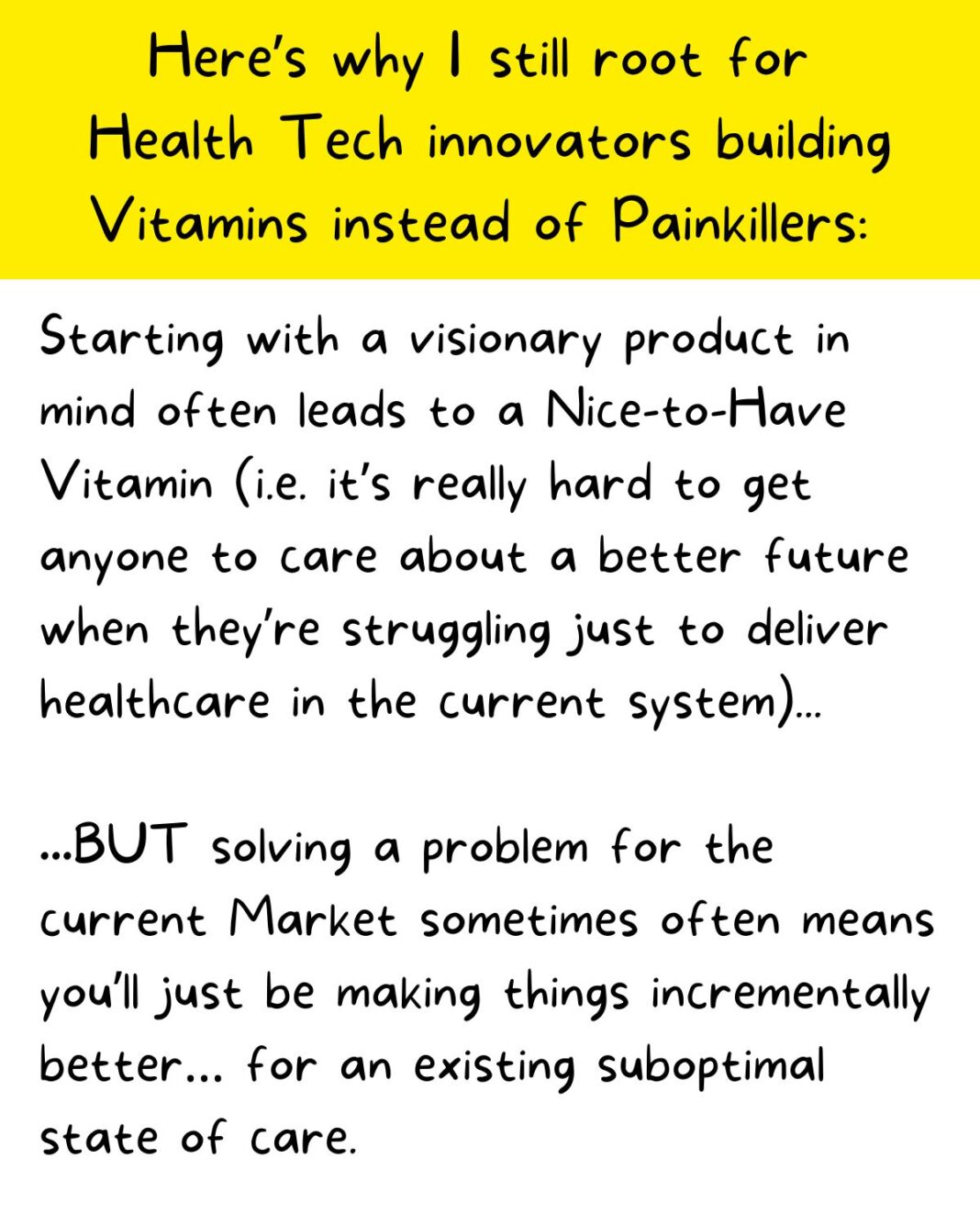“The Pulse of Innovation: Unveiling the Thriving Early Stage Life Science Startup Landscape”
In the realm of life sciences, the past decade has witnessed an exponential surge in innovation, driven by breakthroughs in technology, an influx of capital, and an unwavering commitment to transform human lives. As we step into the new era, it’s imperative to take stock of the vibrant ecosystem that’s shaping the future of healthcare. MedCity News, a leading authority on the intersection of healthcare and technology, has captured the essence of this dynamic landscape in their latest report.

Get a glimpse into the intricacies of the early-stage life science startup landscape, where entrepreneurs, researchers, and investors are converging to redefine the boundaries of medical innovation. From cutting-edge biotech startups to pioneering medtech companies, this landscape is abuzz with activity, promising to revolutionize the way we approach disease diagnosis, treatment, and prevention.

Lessons Learned from a Different Approach
As the healthcare industry continues to evolve, startups are faced with the daunting task of navigating the complex landscape to bring innovative solutions to market. A great example of this can be seen in the journey of SeamlessMD, a company that initially took a visionary approach to digitizing patient journeys. However, as they reflect on their experience, they highlight the importance of understanding the existing market landscape and identifying areas where innovative solutions can make a real impact.
SeamlessMD’s early approach was focused on building a sustainable business by transforming multiple aspects of patient care, including transitioning from static paper instructions to automated digital reminders and education, empowering patients to track symptoms digitally, and providing alerts and dashboards to clinicians. While this visionary approach had the potential to revolutionize patient care, it was met with significant resistance from health system partners, with many years of enthusiastic adoption and successful clinical studies yielding only mediocre results.
However, as the market factors changed over the years, SeamlessMD was able to evolve their approach and make their product more appealing to health systems, eventually achieving significant adoption and impact on reducing length of stay, readmissions, mortality, and costs. This experience serves as a valuable lesson for health tech startups, highlighting the importance of understanding the existing market landscape and identifying areas where innovative solutions can make a real impact.
By taking a more pragmatic approach, startups can increase their chances of success and make a meaningful impact in the healthcare industry. This approach involves working backwards to develop a product that meets the needs of a specific market segment, rather than starting with a revolutionary idea. By doing so, startups can avoid the pitfalls of building a product that is too innovative, yet too difficult to adopt, and instead focus on creating a solution that addresses a pressing market need.
Navigating the Market: A More Pragmatic Approach
So, how can health tech startups navigate the market and increase their chances of success? The key is to understand the existing market landscape and identify areas where innovative solutions can make a real impact. This involves conducting thorough market research, analyzing industry trends, and identifying gaps in the market where new solutions can be developed.
Identifying Market Gaps
Identifying market gaps is a crucial step in developing a product that meets the needs of a specific market segment. This involves analyzing the existing market landscape, identifying areas where innovative solutions can make a real impact, and developing a product that addresses these gaps.
- Conduct thorough market research to understand the existing market landscape and identify areas where innovative solutions can make a real impact.
- Analyze industry trends and identify gaps in the market where new solutions can be developed.
- Develop a product that addresses these gaps and meets the needs of a specific market segment.
- Start by identifying the market needs and developing a product that addresses these needs.
- Work backwards from the product vision to develop a solution that meets the needs of a specific market segment.
- Conduct thorough market research to ensure that the product meets the needs of the target market.
- Develop a product that addresses a pressing market need, yet is still practical and adoptable by health systems.
- Balance innovation with practicality to ensure that the product is adoptable by health systems.
- Conduct thorough market research to ensure that the product meets the needs of the target market.
Working Backwards to Product Vision
Developing a product that meets the needs of a specific market segment involves working backwards from the product vision. This involves identifying the market needs and developing a product that addresses these needs, rather than starting with a revolutionary idea.
Balancing Innovation with Practicality
While innovation is essential in the healthcare industry, it’s equally important to balance innovation with practicality. This involves developing a product that addresses a pressing market need, yet is still practical and adoptable by health systems.
The Right Approach for Your Health Tech Startup
So, how can health tech startups determine the right approach for their product? The key is to evaluate their goals, resources, and market conditions to determine the best approach for their product. This involves considering factors such as market size, competition, and adoption rates, as well as the startup’s resources, including funding, talent, and infrastructure.
By evaluating these factors, startups can determine the best approach for their product, whether it’s to develop a revolutionary product that addresses a pressing market need, or to develop a product that is more practical and adoptable by health systems.
Evaluating Your Options
Evaluating your options is a crucial step in determining the right approach for your health tech startup. This involves considering factors such as market size, competition, and adoption rates, as well as the startup’s resources, including funding, talent, and infrastructure.
- Conduct thorough market research to understand the existing market landscape and identify areas where innovative solutions can make a real impact.
- Analyze industry trends and identify gaps in the market where new solutions can be developed.
- Evaluate the startup’s resources, including funding, talent, and infrastructure, to determine the best approach for the product.
- Choose an approach that aligns with the startup’s values and goals.
- Stay committed to making a meaningful impact in the healthcare industry.
- Conduct thorough market research to ensure that the product meets the needs of the target market.
- Be prepared to adapt their approach as the market evolves and new opportunities arise.
- Stay flexible and open to new ideas and opportunities.
- Conduct thorough market research to ensure that the product meets the needs of the target market.
Staying Motivated and Focused
Staying motivated and focused is essential for health tech startups as they navigate the complex landscape of the healthcare industry. This involves choosing an approach that aligns with the startup’s values and goals, and staying committed to making a meaningful impact in the healthcare industry.
Embracing Uncertainty and Adaptability
Embracing uncertainty and adaptability is essential for health tech startups as they navigate the complex landscape of the healthcare industry. This involves being prepared to adapt their approach as the market evolves and new opportunities arise.
Conclusion
Here is a comprehensive conclusion for the article:
In conclusion, our snapshot of the early-stage life science startup landscape reveals a complex and dynamic ecosystem characterized by innovation, resilience, and adaptability. We’ve seen how startups are driving advancements in areas such as gene editing, synthetic biology, and precision medicine, and how they’re navigating the challenges of funding, talent acquisition, and regulatory hurdles. The data underscores the significance of early-stage life science startups in addressing pressing healthcare needs and improving patient outcomes.
Looking ahead, the implications of this landscape are profound. As these innovators continue to push the boundaries of scientific discovery, they’ll unlock new opportunities for investment, collaboration, and growth. The convergence of emerging technologies like AI, machine learning, and biotechnology will give rise to novel therapies and treatments, revolutionizing the healthcare industry. As the ecosystem evolves, we can expect to see new business models, partnerships emerge, further blurring the lines between academia, industry, and government.
Ultimately, the fate of these pioneering startups will have far-reaching consequences for human health and well-being. As we gaze into the future, one thing is clear: the next great breakthroughs in healthcare will arise from the intersection of science, innovation, and entrepreneurship. Will we rise to the challenge, embracing the possibilities and uncertainties of this journey? The future of healthcare depends on it.
